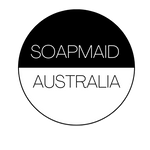
Bath bombs are a delightful addition to any relaxing bath routine, offering fizz, fragrance, and a touch of luxury. However, creating these fizzy spheres of bliss isn’t always a straightforward process. Bath bomb making can sometimes present challenges that even experienced artisans may encounter. Let's explore some common issues and complications faced during bath bomb production and discover effective solutions to ensure your bath bombs turn out perfect every time.
-
Crumbly or Fragile Bath Bombs:
- Issue: If your bath bombs are too crumbly or fragile, it could be due to inadequate moisture or insufficient binding.
- Solution: Ensure proper moisture levels by gradually spraying witch hazel or rubbing alcohol while mixing the ingredients. Aim for a consistency resembling wet sand. Additionally, consider adding a small amount of lightweight oil (like almond or grapeseed) to improve binding.
-
Bath Bombs Collapsing or Not Holding Their Shape:
- Issue: Lack of compression or compactness can cause bath bombs to crumble or lose their shape.
- Solution: Firmly pack the bath bomb mixture into the moulds, ensuring it's tightly pressed to create a solid, dense sphere. Use moulds that are in good condition and press the mixture evenly into both halves before joining them together.
-
Bath Bombs Cracking or Splitting:
- Issue: Rapid expansion or drying out can cause bath bombs to crack or split.
- Solution: Avoid exposing the bath bombs to excessive humidity or heat during the drying process. Allow them to dry in a cool, dry area away from direct sunlight. Slow and controlled drying helps prevent rapid expansion, reducing the likelihood of cracking.
- Tip: Use a humidifier in the room while working in cool temperatures.
-
Color Bleeding or Staining:
- Issue: Bath bombs with vibrant colours may sometimes bleed or leave stains in the bathwater or on the skin.
- Solution: Use skin-safe, water-soluble colorants specifically formulated for bath products. Consider using polysorbate 80, an emulsifier, to disperse colour evenly in the bathwater and minimize the risk of staining.
-
Overexpansion or Lopsided Bath Bombs:
- Issue: Bath bombs that expand too rapidly or unevenly might be due to excessive moisture or inadequate packing.
- Solution: Ensure the bath bomb mixture isn't too wet by gradually adding moisture and mixing thoroughly. Additionally, press the mixture firmly and evenly into the moulds to prevent air pockets and encourage even expansion.
-
Fragrance Fading or Weakening:
- Issue: The scent of the bath bombs might weaken over time or not be as pronounced as desired.
- Solution: Use high-quality fragrance oils or essential oils specifically formulated for bath and body products. Consider increasing the fragrance concentration slightly in the mixture while ensuring it's well-incorporated.

Experimentation, practice, and attention to detail are essential in perfecting the art of bath bomb making. By troubleshooting these common issues and implementing the suggested solutions, you can overcome challenges and create beautifully crafted bath bombs that elevate the bathing experience for yourself and others. Remember, patience and persistence often lead to bath bomb mastery!





